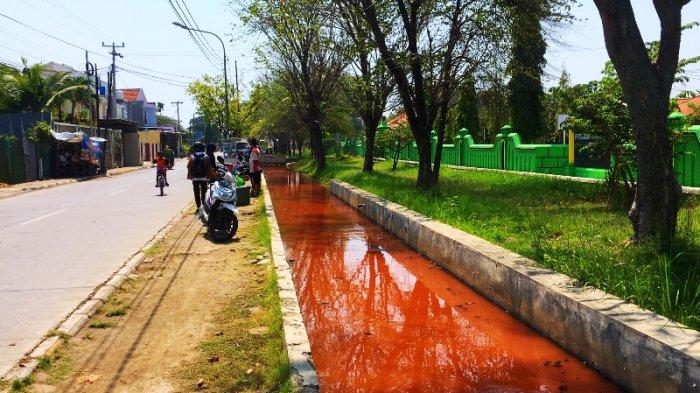Walking the streets of Pekalongan, one immediately sees the two faces of Batik: the beautiful, colored fabrics on the one hand, and the heavily polluted natural landscape on the other.
Batik production in Pekalongan involves a labor-intensive process that includes waxing, dyeing, and boiling the fabric to achieve the desired patterns and colors. Unfortunately, many traditional batik workshops still rely on outdated methods that have detrimental effects on the environment.
- Chemical Dyes: Traditional batik often uses synthetic chemical dyes that contain harmful substances such as heavy metals, toxic solvents, and carcinogenic compounds. These chemicals get into local water sources (canals, rivers, lakes), soil, and the air, posing a serious threat to both human health and the ecosystem.
- Water Pollution: The dyeing and rinsing processes in batik production generate large quantities of wastewater laden with toxic chemicals. Inadequate treatment facilities in many workshops result in the direct discharge of this polluted water into rivers and streams, leading to water pollution that harms aquatic life and contaminates drinking water sources.
- Air Pollution: Boiling and drying batik fabrics release volatile organic compounds (VOCs) and particulate matter into the air. These emissions contribute to air pollution, which can lead to respiratory problems and other health issues for both workers and nearby residents.
- Energy Consumption: The energy-intensive nature of traditional batik production, with its continuous boiling and drying processes, contributes to high energy consumption and greenhouse gas emissions.

The environmental pollution caused by batik production in Pekalongan has far-reaching consequences:
- Biodiversity Loss: Polluted waterways harm aquatic ecosystems and lead to the decline of fish populations. The chemicals also accumulate in the food chain, further threatening local biodiversity.
- Health Risks: Residents and workers in the vicinity of batik workshops face health risks due to exposure to polluted air and water. Respiratory issues, skin diseases, and other health problems are common among those living in areas with heavy batik production.
- Soil Contamination: The chemicals used in batik production can seep into the soil, affecting agricultural lands, contaminating crops, and leading to food safety concerns.
- Subsidence and Flooding: large amounts of groundwater extractions for batik production, cause land subsidence across the city (i.e. the city is literally sinking into the sea), which in turn causes damage to infrastructure (buildings, roads) and more frequent and severe flooding.
- Climate Change: The high energy consumption and emissions associated with batik production contribute to climate change, exacerbating the global environmental crisis.





